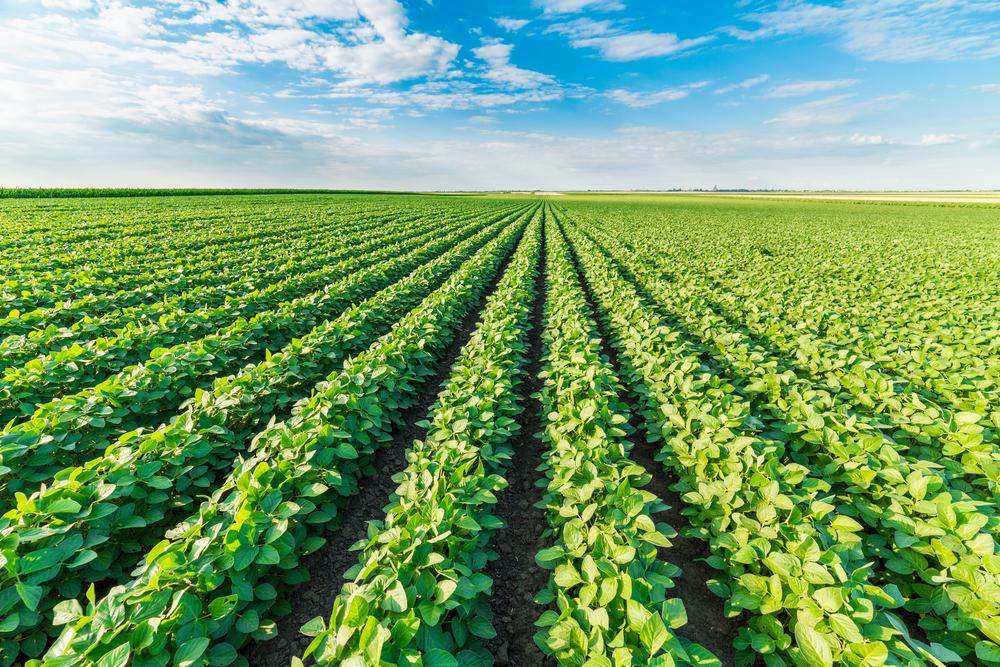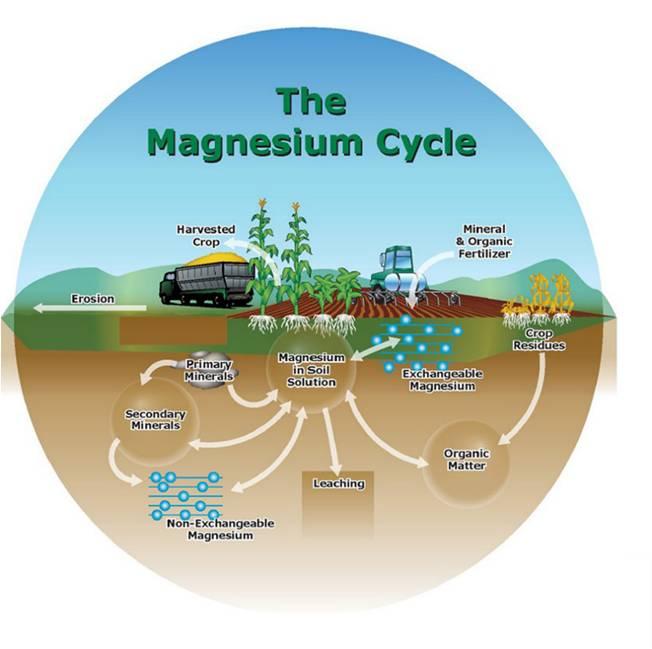
Why is Magnesium Essential for Both Crops and Human Health?
Magnesium (Mg) is vital for a plant’s physiological and bio-chemical functions. However, due to factors like using certain fertilizers and soil becoming more acidic, magnesium can become scarce and limit crop’s growth. Managing magnesium levels in soil is crucial for improving fertility and crop yield. Most of the magnesium in soil is stuck in minerals and is not easily absorbed by plants. But with the right fertilization, crop losses due to magnesium shortage can be reduced.
Magnesium in the Soil –
Magnesium is abundant in the earth’s crust. It is abundant and found in various minerals. As these minerals break down, magnesium becomes available for plants to use. It sticks to clay and organic matter particles on the soil’s surface, but this form of magnesium does not easily wash away from the soil.

Relationship with Other Nutrient Elements –
Magnesium affects how potassium moves in the soil. If there is too much potassium added continuously, it can lead to magnesium deficiency because it interferes with magnesium absorption. In soil with high magnesium levels, there is a negative interaction with calcium, which reduces calcium uptake by plants. This causes calcium deficiency. The relationship between calcium, magnesium, and potassium also affects magnesium uptake and it varies depending on factors like soil properties and ion concentration.
Important for Plant Growth –
Photosynthesis, which is crucial for crop production relies on the plant’s magnesium status in several ways. Magnesium is a key component of chlorophyll, the molecule responsible for capturing light energy in plants. Without enough magnesium, older leaves may develop yellowing between veins due to chlorosis. Since magnesium moves easily within the plant, a shortage can negatively impact energy production and overall crop quality, not just yield.
Additionally, magnesium serves as a cofactor for over 300 enzymes involved in chlorophyll production and carbon dioxide fixation during photosynthesis. It is also needed for activating various other enzymes. Magnesium plays roles in sucrose transport, energy production, nitrogen utilization, pollen development, stress tolerance, plant-microbe interactions, and many other biological processes.
Sources of Magnesium –
There are various sources of magnesium that can meet crop needs. For soluble sources, minerals like Kieserite, Kainite, Langbeinite, and salts like Magnesium Chloride, Magnesium Nitrate, and Magnesium Sulfate (Epsom salt) are commonly used. These dissolve easily and can be surface-placed. Animal wastes and composts also contain magnesium, but in lower concentrations compared to minerals. Foliar sprays containing soluble magnesium materials can be used to correct deficiencies, but they may need to be repeated for maximum effect.
For semi-soluble sources, materials like Dolomite, Hydrated dolomite, Magnesium oxide, and Struvite are used. These materials should be incorporated into the soil as they dissolve more slowly. There are no significant environmental concerns associated with magnesium use in agriculture, and rainfall usually contributes less than one pound per acre per year of magnesium.
Magnesium Deficiency in Plant –
Magnesium deficiency in plants typically shows up first in the oldest leaves because magnesium is a mobile element within the plant. Initially, the loss of a healthy green color in the leaves is the first sign of deficiency. As the deficiency worsens, the area between the veins of the leaves turns yellow while the veins remain green. In severe cases, this yellowing spreads from between the veins toward the center of the leaf. Advanced stages of magnesium deficiency may result in small brown dead spots appearing in the areas between the veins of the leaves.
Conclusion –
Crop fertilization practices continue to intensify with the demand for high yields. Magnesium is an essential plant nutrient that is frequently overlooked and may be limiting plant growth. Soil testing should be used to identify potential deficiencies. There are many excellent magnesium sources available for farmers when needed.
Its benefits are not only limited to higher crop yield, magnesium is also the most important nutrient element to prevent the lifestyle diseases of today’s day and age. Agriculture produces (Leafy Vegetables, Legumes, and Cereals etc.) are the natural and safest source of magnesium in our body by regular diet.
Sources –
- Soniya, V. P., & Bhindhu, P. S. (2023). Magnesium Supplementation Concerning Soil Chemical Properties and Cowpea Yield in Ultisol of Kerala, India. International Journal of Plant & Soil Science, 35(18), 149–156.
- Gerendás, J., Führs, H. The significance of magnesium for crop quality. Plant Soil 368, 101–128 (2013).
- https://doi.org/10.1007/s11104-012-1555-2
- https://www.frontiersin.org/journals/plant-science/articles/10.3389/fpls.2022.802274/full
- https://www.researchgate.net/publication/308795926_Soil_and_Fertilizer_Magnesium
- https://www.mineralresourcesint.com/16-causes-of-magnesium-deficiency/
